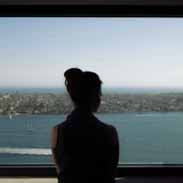Three Dimensional Arrangement Flashcards, test questions and answers
Discover flashcards, test exam answers, and assignments to help you learn more about Three Dimensional Arrangement and other subjects. Don’t miss the chance to use them for more effective college education. Use our database of questions and answers on Three Dimensional Arrangement and get quick solutions for your test.
What is Three Dimensional Arrangement?
Three dimensional arrangements are a form of spatial organization where objects or elements are placed in relation to one another to form a cohesive and aesthetically pleasing whole. This type of arrangement is especially common in art and design, as it allows for a greater degree of visual interest and complexity than two-dimensional arrangements. Three dimensional arrangements can also be found in architecture, landscape design, furniture design, product display, and more.The key components of a three dimensional arrangement are depth, space, balance, rhythm, harmony, emphasis (or focal point), scale/proportionality, texture/materiality and color. Depth refers to the dimensionality of an objecthow far away it appears from the viewer’s eye. Space is the area between objects that creates an overall sense of unity. Balance is achieved when there is an equal distribution of elements across all axes (top-bottom & left-right). Rhythm creates movement within the arrangement by repeating similar shapes or forms throughout the composition. Harmony is achieved when different parts work together to create an overall unified look or feel. Emphasis (or focal point) helps guide the viewer’s eye throughout the composition by creating distinct points where attention should be directed. Scale/proportionality helps create perspective by contrasting larger and smaller items within a composition as they relate to one another’s size relative to their environmentthink big tree vs small birdhouse nestled nearby its branches; larger rocks surrounded by finer sand grains; etc. Texture/materiality refers to both tactile qualities as well as visual characteristics such as patterning or opacity that give each element character & uniqueness regardless of its size relative to others within the arrangement. Finally color can help unify disparate elements while adding additional visual interest & variety – think bright orange flower petals amidst green leaves & stems; silver balls punctuating blue pebbles; etc. Using these concepts in concert with one another can help create dynamic three dimensional arrangements that draw viewers into their world and invite them on a visually stimulating journey through space.









